Tag: contact solution’
Slime versus Slime
- by KitchenPantryScientist
A homemade slime craze is sweeping the nation, and glue is becoming a limited resource as stores are swarmed by school kids on a quest to make the perfect goo.
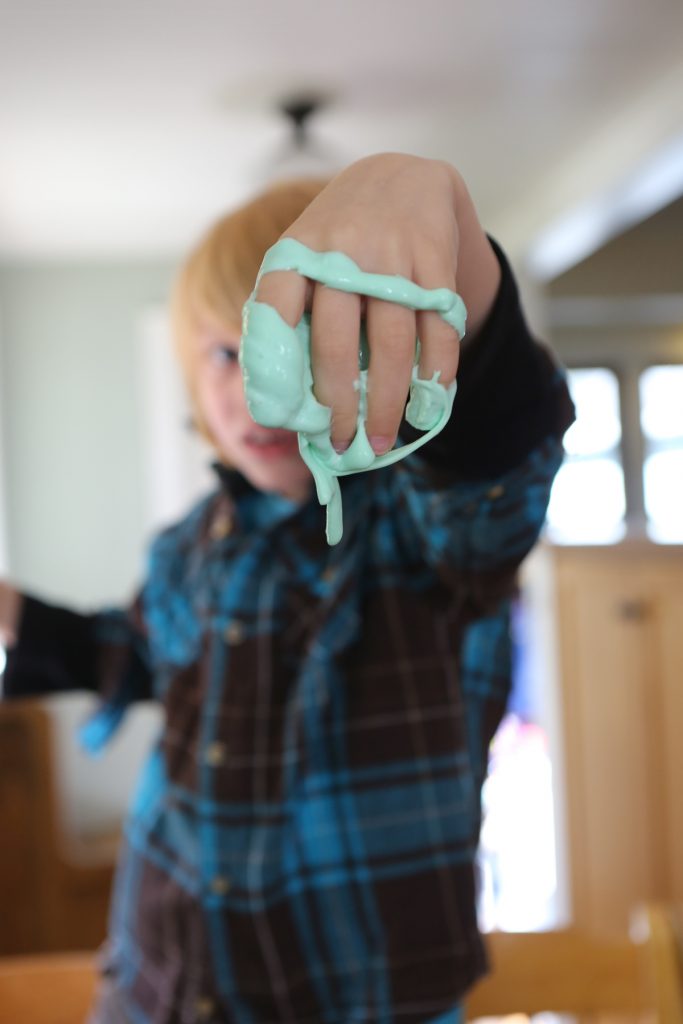
from Kitchen Science Lab for Kids (Quarry Books 2014)
I’ve posted recipes and videos for slime-making on this website and included one in “Kitchen Science Lab for Kids.” For my most recent book, “Outdoor Science Lab for Kids,” I invented a recipe for making slime that oozes from a bottle like a living thing.
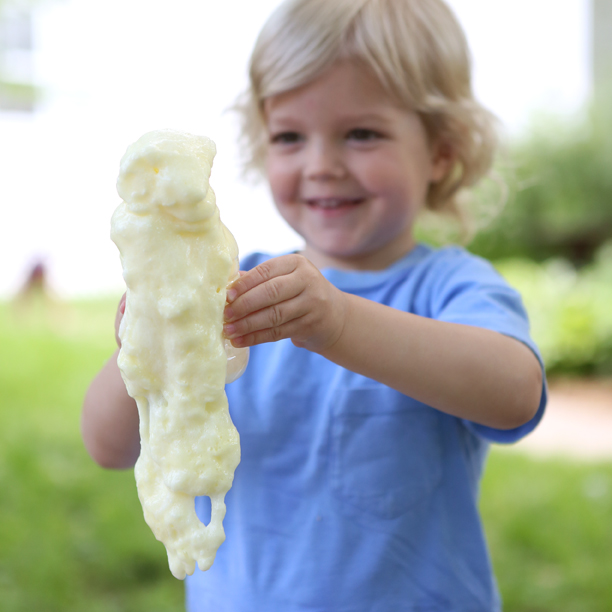
From “Outdoor Science Lab for Kids” (Quarry Books 2016)
But the other day, my 11-YO brought home a slime recipe featuring clear glue, baking soda, shaving cream and contact lens solution, and I was baffled. Which ingredient was the cross-linking chemical that would bind all of the glue molecules together into slime? I hadn’t had much luck using any cross-linker besides Borax laundry detergent.
Curiosity got the best of me, and a trip to Walgreens confirmed my suspicion that most contact lens solution contains boric acid, a cross-linking chemical related to Borax. In the glue aisle, I discovered a “Borax-free slime” recipe for slime made with Tide Free and Gentle. (Tide detergent does, in fact, contain the same chemical in Borax, so it’s not really Borax-free.)
A few days later, a friend called saying that the slime her kids were making with Borax and clear glue wasn’t turning out. That’s when I decided it was time for us to do some scientific sleuthing.
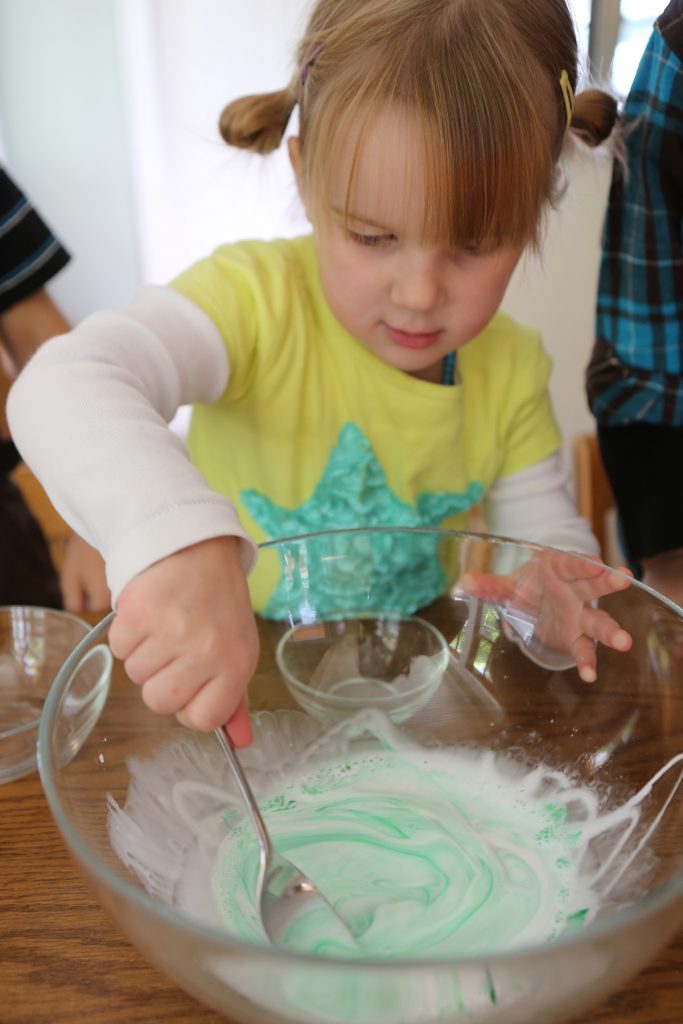
From Kitchen Science Lab for Kids (Quarry Books 2014)
We tested two glues (clear glue and white school glue) with three cross-linking solutions (Borax laundry detergent, contact lens solution, and Tide Free and Gentle (which contains some Borax) to see how the end-products would differ.
Helpful hints: A bottle of glue contains 4 or 5 oz, which is a little more than half a cup. Mix glue with other ingredients BEFORE adding the cross-linker. Keep slime away from toddlers, as ingredients may be harmful if consumed. Always wash your hands after playing with slime.
Here’s what we found:
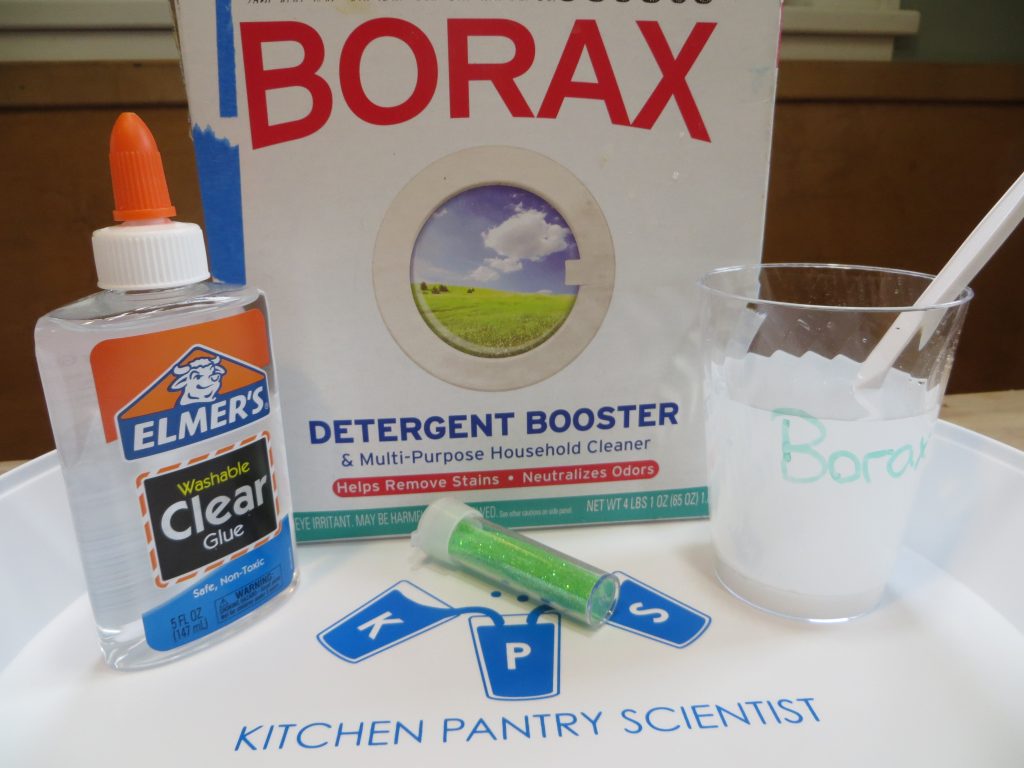
Traditional Borax Slime: Add equal parts glue and water (for example, one 5 oz bottle of glue+5 oz water.) Add glitter or food coloring. Dissolve a few spoonfuls of Borax in a cup of water to make a Borax solution. Add Borax solution to glue, a little at a time, until it no longer feels sticky.
-White school glue works best for this recipe and the result is smooth slime that can be rolled into long snakes.
-Clear glue doesn’t work well with this recipe and produces brittle slime. Save clear glue for the two recipes below.
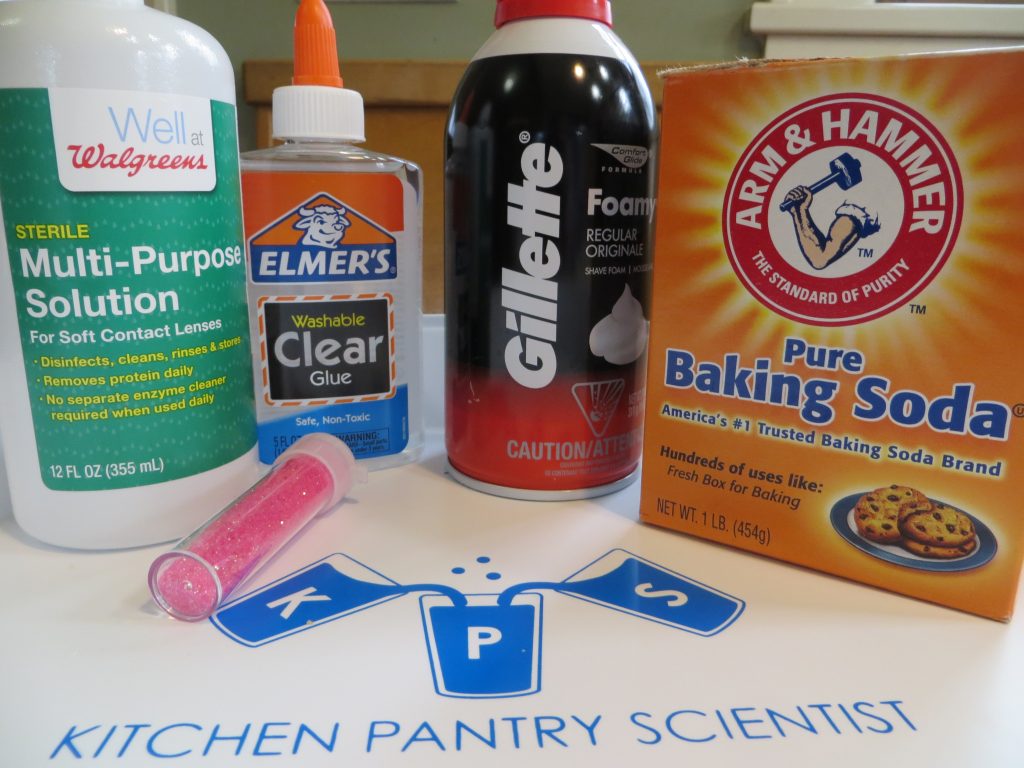
Puffy Slime: Add 5 oz glue to a large bowl. Stir in 1/2 tsp baking soda, 1/4 cup shaving cream and glitter or food coloring. Mix well. Add contact lens solution as a crosslinker and stir. Keep adding contact lens solution until your slime is no longer sticky and knead slime until it has the desired consistency.
-White school glue works well with this recipe and results in a puffier, firmer product than clear glue. The slime has a strong shaving cream smell.
-Clear glue works well for this project and produces nice, smooth puffy slime that smells like shaving cream.
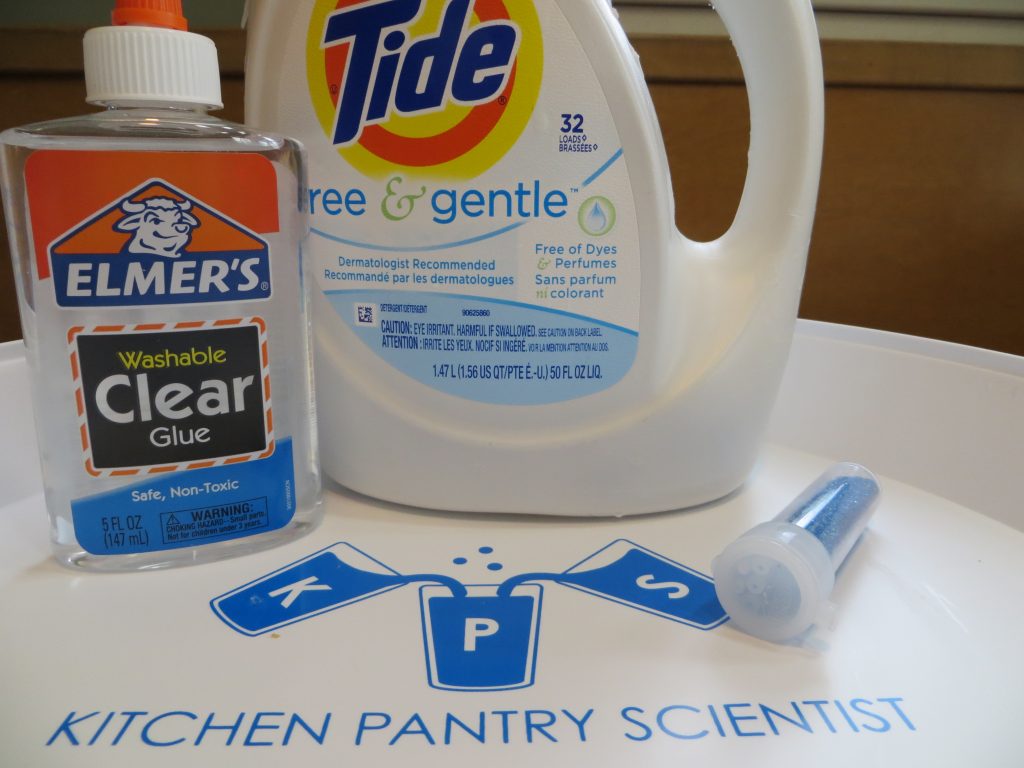
Tide Detergent Slime: Add 5 oz glue to a large bowl. Stir in 5 oz water and some glitter or food coloring. Add 1/4 cup of Tide Free and Clear laundry detergent. Mix well with a spoon and then hands to the desired consistency.
-White school glue works well with this recipe and the soap in the detergent makes tiny bubbles in the slime.
-Clear glue works well for this project and makes great , smooth slime that’s puffy from the soap in the detergent.

Try adding cornstarch, lotion, or anything else you can think of to perfect your recipe.
What are you waiting for? Go make some slime!
The Science Behind the Fun: A polymer is a long chain of repeating molecules, kind of like a string of pearls. The polymer in school glue is called polyvinyl acetate. Borax solution (sodium tetraborate) and boric acid (combined with baking soda to make borate), are cross-linking substances that make the polymer chains in glue stick together. As more and more chains stick together, they can’t move around and the solution gets thicker and thicker. Eventually, all the chains are bound together and no more Borax or boric acid solution can be incorporated into the slime.